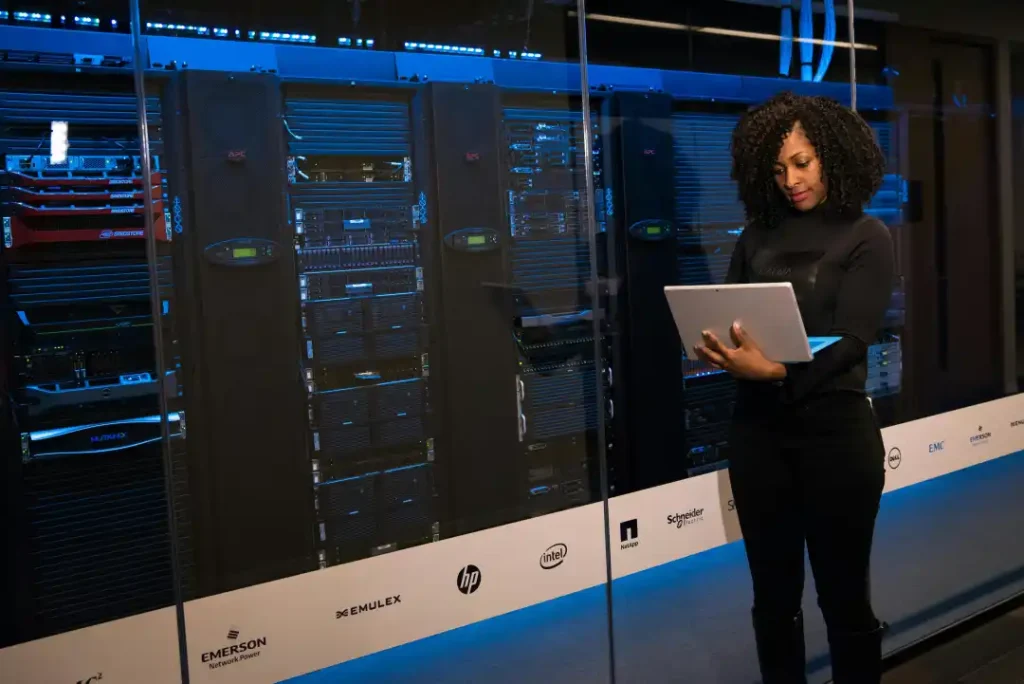Designing a data center is a significant undertaking that requires a meticulous approach. These facilities are the backbone of modern businesses, housing the critical infrastructure that keeps our digital world running. When planning your data center, there are several key factors to consider to ensure its efficiency, scalability, and longevity. This guide will walk you through six essential aspects to keep in mind during the design process to help you build a data center that can meet the demands of today’s rapidly evolving technology landscape.

Location and Physical Environment
Choosing the right location for your data center is crucial. A suitable location minimizes the risk of natural disasters and offers adequate space for expansion. It’s worth considering the proximity to major transport links and the availability of skilled technical staff in the local area. In addition, the physical environment of the data center should be conducive to hardware longevity. This involves ensuring optimal temperature and humidity levels, which may involve investments in HVAC systems, and considering the potential for water damage or other environmental hazards.
Also, keep in mind any potential security risks when selecting a location for your data center. This includes assessing the area’s crime rate and implementing appropriate physical security measures to protect against unauthorized access. When designing a data center, it’s essential to strike a balance between accessibility and security. Plus, consider potential access to alternative power sources in case of a blackout or other emergency.
Network Connectivity
Effective data center design also involves careful consideration of network connectivity. This includes understanding the bandwidth requirements of your operations and ensuring that your internet service provider can meet these needs. Redundancy should be built to keep your operations running smoothly in the event of network failures. This might involve having backup ISPs or implementing technologies such as load balancing and automatic failover. Additionally, consider the need for internal network segmentation to improve security and optimize data flow.
Keep in mind the potential for future growth and technological advancements when planning your network connectivity. Will your data center be able to handle increased traffic and new technologies in the coming years? It’s important to have a flexible network architecture that can adapt to changing demands.
Power Supply and Cooling Systems
Uninterrupted power supply and efficient cooling systems are integral to the operation of a data center. The design should include reliable power sources and backup generators to ensure continuous operation. Proper cooling systems are also critical to prevent overheating of servers. Adequate ventilation, air conditioning units, and even location-specific strategies like using cold outdoor air can help maintain the right temperature levels.
Not only do these systems keep the equipment functioning optimally, but they also help reduce energy costs and minimize downtime. When designing your data center, consider incorporating green energy solutions to reduce your carbon footprint and save on electricity bills.
Security Measures
Security is paramount when designing your data center. This includes physical security measures such as CCTV, access control systems, and secure cabinets, as well as cybersecurity measures to protect against data breaches and cyber-attacks. Regular audits, firewalls, intrusion detection systems, and robust data backup and recovery systems can help ensure your data is protected against potential threats. It’s essential to have a comprehensive security plan in place and regularly update it as new threats emerge.
Scalability and Flexibility
Scalability and flexibility are key considerations in modern data center design. Your design should account for growth and change, allowing for the addition of more servers or adjustments to infrastructure as needed. This might involve modular design elements, which allow for easy expansion, or the incorporation of cloud services for flexible capacity management. The ability to scale up or down quickly and efficiently can save time, money, and resources in the long run.
Additionally, consider the potential for technology advancements and how they may impact your data center. A design that can accommodate future developments will save you from having to make significant changes or upgrades down the line.
Sustainability
Finally, sustainability plays an increasingly important role in data center design. This can involve using energy-efficient equipment, investing in renewable energy sources, or using innovative cooling techniques to reduce energy consumption. Additionally, recycling or responsibly disposing of outdated equipment and considering the environmental impact of your supply chain can contribute to a more sustainable data center.

In conclusion, designing a data center requires a thoughtful approach that takes into consideration a multitude of factors, including location, connectivity, power supply, security, scalability, and sustainability. By carefully addressing these factors, you can build a facility that not only meets the demands of today’s digital landscape but is also prepared for the technological advancements of the future. Remember, a well-designed data center can provide the backbone for a robust and resilient business operation, contributing to your organization’s overall success.

